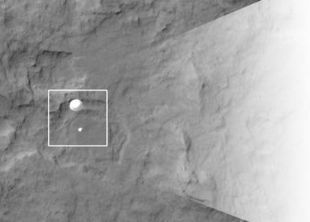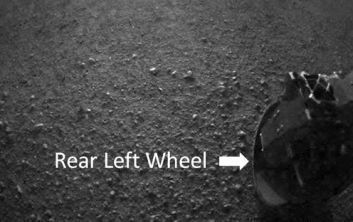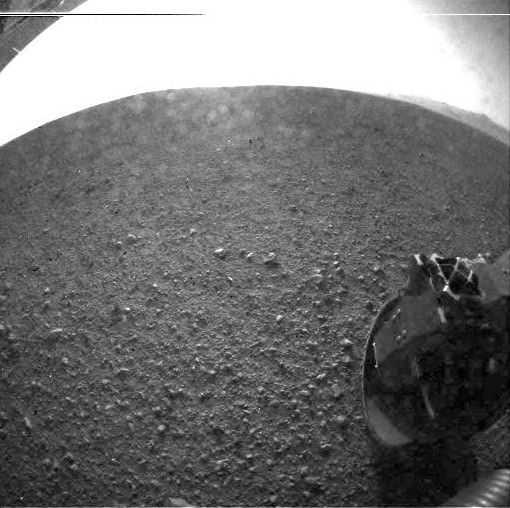The Curiousity Rover has successfully landed on Mars:
The following Mars snapshts are real and not re-creations.
{ All data has been taken from the J.P.L. website: http://mars.jpl.nasa.gov/msl/news/whats ... ewsID=1290 }


Quoted "08.06.2012
Curiosity Spotted on Parachute by Orbiter
NASA's Curiosity rover and its parachute were spotted by NASA's Mars Reconnaissance Orbiter as Curiosity descended to the surface on Aug. 5 PDT (Aug. 6 EDT). The High-Resolution Imaging Science Experiment (HiRISE) camera captured this image of Curiosity while the orbiter was listening to transmissions from the rover. Curiosity and its parachute are in the center of the white box; the inset image is a cutout of the rover stretched to avoid saturation. The rover is descending toward the etched plains just north of the sand dunes that fringe "Mt. Sharp." From the perspective of the orbiter, the parachute and Curiosity are flying at an angle relative to the surface, so the landing site does not appear directly below the rover.
The parachute appears fully inflated and performing perfectly. Details in the parachute, such as the band gap at the edges and the central hole, are clearly seen. The cords connecting the parachute to the back shell cannot be seen, although they were seen in the image of NASA's Phoenix lander descending, perhaps due to the difference in lighting angles. The bright spot on the back shell containing Curiosity might be a specular reflection off of a shiny area. Curiosity was released from the back shell sometime after this image was acquired. "
"08.06.2012
Curiosity's Rear View, Annotated
This is a labeled version of one of the first images taken by a rear Hazard-Avoidance camera on NASA's Curiosity rover, which landed on Mars the evening of Aug. 5 PDT (morning of Aug. 6 EDT). The image shows a fin on the radioisotope thermoelectric generator (the rover's power source), the rear left wheel and a spring that released the dust cover on the Hazard-Avoidance camera.
It was taken through a "fisheye" wide-angle lens. The unlabeled version is available at PIA15973. It is one-half of full resolution.
Part of the rim of Gale Crater, which is a feature the size of Connecticut and Rhode Island combined, can be seen at the upper right of the image.
As planned, the rover's early engineering images are low resolution. "
According to them, this is currently the highest resolution image taken:

[ black & white photos are not very exciting..., so, I'm still waiting for them to release color photos.



